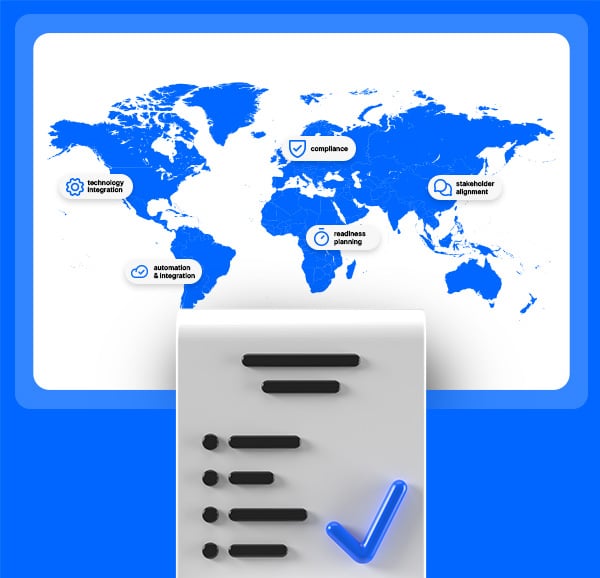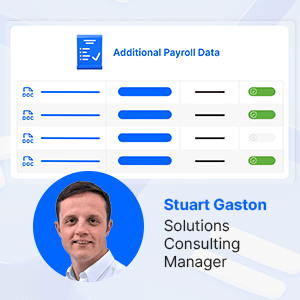Almost a year on from my 2024 payroll predictions, it’s valuable to look back at how these played out over the year, and more importantly, understand what they tell us about the road ahead. The pace of change has exceeded even the most optimistic forecasts, particularly in how AI adoption, automation, and APIs are combining to reshape the fundamentals of global payroll. Drawing from my perspective as CloudPay’s COO and the patterns we’re seeing across our customer base, I believe 2025 will be a pivotal year for payroll transformation.
2024 in review: Employee experience, artificial intelligence, and compliance
Looking back at 2024’s key developments provides crucial context for understanding payroll’s trajectory in the year ahead. The three areas I identified as transformative forces for payroll in 2024 – employee experience, AI, and compliance – exceeded expectations in their impact and scope. Each has evolved in ways that will continue to shape our industry:
- Employee experience: major steps have been taken towards decentralized payroll, especially with the rise of freelancers and gig workers in the job market, and new options for making payments such as cryptocurrency. The greater level of flexibility in the world of work has been followed by similar flexibility in how and when people are paid. This trend is something we at CloudPay have consistently supported with innovations like CloudPay NOW, although this app can facilitate pay on demand, we have developed this also to become our micro service for Payroll.
- AI technology implementation: at the start of 2024, most organizations were aware of AI and were taking steps to weave it into their solutions, but few had concrete plans in place. Heading into 2025, CloudPay now has a full AI roadmap in place, so that practical application will very much spearhead our development this year.
- Regulatory challenges and compliance: regulations around the world continue to get more complex all the time. And with focus shifting in 2024 towards more technology-specific regulations, we’re adjusting our emphasis to meet a very different type of compliance challenge.
Three key technology trends for 2025
In 2025, CloudPay experts’ deep understanding of global payroll’s complexities will steer a digital transformation journey leveraging our three pillars: AI, automation, and APIs. It’s this human expertise – knowing exactly where and how to deploy these ‘three As’ – that will unlock their true potential and optimization in 2025. Here’s how I envisage these carefully targeted technologies transforming payroll:
Accelerating artificial intelligence integration
At the beginning of last year, artificial intelligence in payroll was one of the emerging technologies still finding its feet. Many businesses were tentatively exploring AI’s potential, weighing up use cases and considering pilot projects. What a difference a year makes. Today, AI implementation has moved from theoretical discussions to practical reality – CloudPay alone has numerous AI solutions in active development, from AI-driven payroll and payslips reconciliation to smart cybersecurity (GANs).
We’re establishing and maintaining a position as a leader in payroll AI development and adoption. We already have AI capabilities in development as part of our long-term strategy; we aim to deploy AI-powered predictive analytics, and utilize blockchain and AI for even more secure and transparent payroll.
In 2025, we’ll see many more AI projects come to fruition. At CloudPay, we are transitioning from an experimental phase towards bringing in practical solutions, which in the short term, will include:
- Predictive analytics: the first phase of our AI analytics rollout will help users forecast payroll needs and make more informed decisions around workforce management.
- AI reconciliation: Cloudpai® will foster a culture of innovation that strips away the complexity and risk of error across payroll. This will be achieved by accelerating R&D through state-of-the art technologies, including end-to-end automation of payroll and payments, an AI knowledge base for global expansion, and CloudPay Gateway integration.
- Cybersecurity: with AI use being increasingly regulated, we’re taking a forward-thinking approach with localized AI models. This means that AI can be used in different ways in different countries to meet specific regulations that vary from one region to another (Spain’s restrictions on Apple Intelligence, for example). That way, we can help users adopt the highest standard of robust, AI-led data security, within the legal boundaries of what they’re allowed to do.
Expanding automation
CloudPay’s automation capabilities are already especially strong, to the point that we can now fully automate the running of entities across data upload, validation, client sign-off, automatic processing and payments.
However, human oversight of automation remains critical, especially regarding exception management and quality control. CloudPay’s system retains those checks and balances, flagging up issues that require human attention, which means that skilled staff only focus on anomalies rather than routine processing.
It’s important to note that suitable governance and controls still need to be in place when using AI-based processes. At CloudPay, any new processes maintain the relevant standards required to meet Service Organization Control (SOC) data-handling compliance.
In 2025, I expect that expanded automated payment capabilities will make the process faster and more flexible. At CloudPay, our goal is to open this service to larger organizations, and enable payments through more options, from anywhere. By the end of the year, we will deliver:
- Real-time insights and a holistic view of the payroll-to-pay process
- Data consolidation and earlier issue identification
- Interactive widgets and customizable layouts that optimize employee experience
- Enhanced monitoring and tracking with service health and KPIs available at-a-glance
Broader API integration
In 2025, I expect we will see a shift to broader API-based integration, based around real-time data, and bi-directional sync that enables a single source of truth. As an example, this will mean employees only have to access one system for payroll and HR rather than two separate ones, and that payslips can be pushed back into the HR system if required.
To achieve this, CloudPay will be expanding our integration with payment providers and HRM system developers alike. We already work with big players in payments like TransferMate and Ebury, as well as in HCM with Workday, SuccessFactors, UKG, HiBob, Oracle. We are evaluating additional providers with the goal of maximizing flexibility and the speed of making payments from anywhere.
For 2025, our API focuses will include:
- Microservices: through APIs and microservices, we can move past monolithic systems towards a more flexible, modular architecture. This will allow us to add tailored functionalities like automated payroll audits, cross-border tax handling and integrated benefits management.
- Ommi-channel APIs: A unified integration engine that uses AI to connect and streamline communications across various platforms, formats, and data sources and improve user experience.
Our vision is to deliver a unified platform that seamlessly integrates payroll, benefits, workforce analytics, payments, vendor management, expense management and more maximizing the power of cross-platform collaboration.
Opening up payroll possibilities
As you can see, there’s a lot to get excited about, not only with what we’re doing at CloudPay, but in the wider world of payroll and technology. The convergence of artificial intelligence, automation, and APIs is opening up unprecedented possibilities for global payroll. Together, these technologies will deliver what matters most: reduced complexity, deeper insights, and the integration capabilities needed for true payroll transformation.
Read more about the impact of technology and talent on global payroll in our Tech-Talent Equilibrium report.
And get in touch with us to talk to us about to how our latest tech developments can help you digitize, automate and unify your payroll operation for the long-term.




